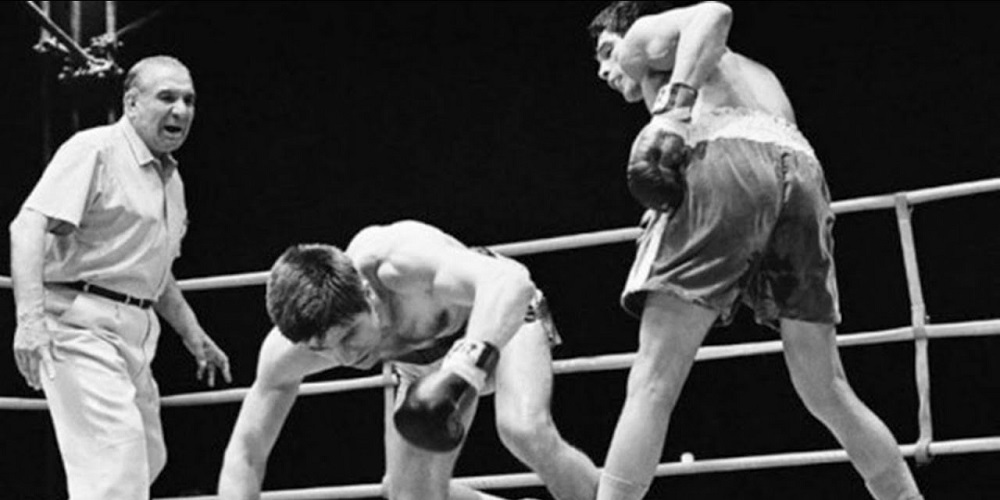On November 7, 1970, the great Nino Benvenuti was dethroned from his reign as the undisputed King of the middleweights by the emergence of the brutal Argentine puncher Carlos Monzon. For our section on Great Fights of the Past, we recount that night, so unfortunate for our country but so significant for the history of boxing.
After a stellar career among the super welterweights, which included the historic clashes against his lifelong rival Sandro Mazzinghi, Nino Benvenuti moved to the middleweights following a controversial defeat in South Korea against the local idol Ki-Soo Kim. He washed away that bitter disappointment by earning the recognition of being the best middleweight on the planet thanks to the memorable trilogy against Emile Griffith: the two won a match each before Nino triumphed in the third and decisive chapter. Since then, perhaps due to the harshness of those epic battles, Benvenuti began to lose some of his brilliance, struggling more and more against opponents he would likely have beaten easily at his peak. This led to some defeats in non-title fights and struggles in title defenses, and then, as mentioned, came Monzon’s turn.
The Argentine, chosen from a plethora of possible challengers considered by the two organizations of which Benvenuti was champion (WBC and WBA), was fundamentally unknown to the general public, never having fought outside South America: mostly in Argentina, occasionally in Brazil. The designation generated some controversy: Escopeta, as the challenger was called, was considered by many to be too soft an opponent, lacking the proper pedigree to deserve a world title shot. Even in Monzon’s homeland, there was considerable skepticism, so much so that no specialized journalist traveled to follow the boxer in Italy. The subsequent events demonstrated how great the oversight was for the boxing world at that time.
Facing what was effectively an unknown entity, Benvenuti displayed a rather bold initial approach, positioning himself at the center of the ring as if he believed he was destined to command the operations and trying to put pressure on the challenger, who for a significant part of the first round did not reveal his best qualities, limiting himself to a cautious passive control of the situation. Monzon then exploded with some violent blows just before the bell, almost as if to tell the opponent and his supporters not to expect an easy fight. The first part of the match followed the pattern of the first round: Monzon measured his blows sparingly but produced tangible effects each time he landed, thus wiping out our compatriot’s initial confidence and forcing him into confused and fearful boxing.
Benvenuti had a surge of pride in the fifth round, during which he left behind the fears related to the blows received in the previous rounds and attacked decisively, doubling his masterful left hook on several occasions and significantly raising the pace of the contest, igniting the audience at the Palazzetto dello Sport in Rome. However, it took little time for the challenger to find the right countermeasures: instead of waiting for the opponent’s action to punish him on the counter, as he had done up to that point, he began to close the distance and work on the body. This resulted in numerous clinch phases during which Monzon always prevailed thanks to his overwhelming physicality, to which Benvenuti found no answers.
After two rounds of suffering, the second of which, the seventh overall, was really tough, the Italian ace found new energy thanks to a brilliant tactical inversion: a return to basics. Realizing he couldn’t match the Argentine’s sculptural physicality in close quarters, Benvenuti relied on his proverbial straight-line boxing: straight punches, lateral movements, feints, and counters. The jab in particular proved to be a fundamental weapon because it simultaneously interrupted the challenger’s actions, causing him to lose the rhythm of his attack, and allowed Benvenuti to pave the way for combinations.
The hopes raised by the miraculous recovery attempt by the local idol were destined to be short-lived. To continue on that path until the end of the fifteen scheduled rounds, Benvenuti would have needed the stamina of his best times; however, his fuel began to run out starting from the tenth round. Slowed down by the inexorable fatigue, the champion increasingly found himself forced to trade blows, no longer having the leg strength to dodge Monzon’s responses after his own attacks. Naturally, he didn’t back down and tried stoically to withstand the onslaught, but it was all in vain. Escopeta immediately sensed the smell of victory and intensified his force, unleashing himself with furious impetus: the right hand that forced Benvenuti to lean against the ropes at the end of the eleventh round was the prelude to the end.
All long-time boxing enthusiasts will have seen at least once what happened in the twelfth and decisive round. Monzon gradually broke down the champion’s last defenses and, after forcing him into the corner on the defensive, floored him with a textbook right hand. The referee’s count was pointless: the brilliant career of Nino Benvenuti had come to an end. From that precise moment, Monzon’s reign began.
The match was named Fight of the Year 1970 by The Ring Magazine.

